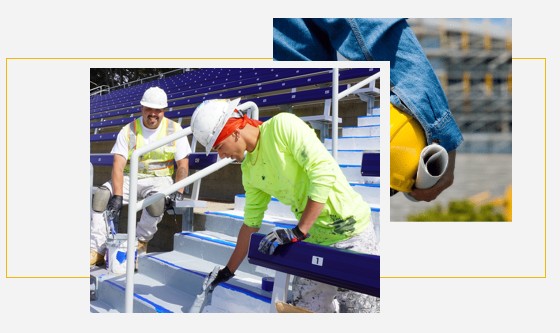Historic building renovations can be a challenging yet rewarding process, especially when aiming to preserve historical significance while enhancing the property’s value. The process is fraught with potential common mistakes that can compromise the integrity or value of a heritage structure.
For building owners passionate about retaining the unique character of their historic properties, understanding these pitfalls is crucial. The following guide serves to illuminate some of the most common renovation errors and how they can be avoided, ensuring a successful restoration that honors historical integrity.
Importance Of Historic Preservation
Preservation lays the foundation for maintaining a building’s historic character while allowing for modern usability. Understanding why preservation is essential helps building owners prioritize historical integrity over purely aesthetic or contemporary updates.
- Maintaining the architectural integrity of the structure.
- Protecting the cultural significance of historic buildings in Salinas.
- Enhancing property value through well-executed preservation.
- Qualifying for preservation funding opportunities.
Mistakes In Historic Building Renovations Damage Historic Value
When renovating historic buildings, owners often fall into several common mistakes that can diminish their property’s historic value. Avoiding these pitfalls requires a clear understanding of the building’s history and a commitment to preserving its authenticity.
Avoid Over-Modernization
Incorporating overly modern designs or fixtures can clash with the building’s period-appropriate aesthetics, resulting in a loss of its historic character. Strive for updates that respect the original design while meeting modern needs.
Removing Plaster Walls Affects Authenticity
Plaster walls are often integral to a historic building’s charm and authenticity. Replacing them with modern materials like drywall can erase a key aspect of the building’s historical integrity. Whenever possible, repair and preserve these original features.
Don’t Use Abrasive Cleaning Methods
Using harsh cleaning techniques, such as sandblasting, can damage delicate historic materials like stone, brick, or plaster, causing irreversible harm. Opt for gentler, preservation-approved methods to clean and restore surfaces.
Ignoring Historical Integrity Decreases Value
Removing or altering original architectural features, such as moldings, windows, or woodwork, can diminish the building’s value and charm. Preservation efforts should prioritize retaining these elements.
Skipping Research Can Lead To Ahistorical Changes
Renovating without understanding the building’s history, design, or materials can lead to inappropriate changes. Adding design elements that clash with the historic aesthetic, such as modern windows or doors, disrupts the visual harmony of the building. Researching the property or consulting experts ensures renovations align with the building’s original character and maintains design consistency.
Don’t Use Modern Materials Too Obviously
Introducing modern materials, like vinyl siding or synthetic replacements, that don’t match the original can undermine the building’s historical authenticity. Always use materials that replicate the original as closely as possible even when modern materials are necessary due to new building codes or updated environmental laws. A green building contractor experienced in historic building renovations can guide you to appropriate materials.
Neglecting Building Codes & Permits Leads To Consequences
Overlooking permits or failing to follow local historic district commission regulations can lead to fines, delays, or even forced alterations. Ensure compliance with all preservation laws. However, focusing solely on aesthetics while neglecting structural problems, such as foundation cracks or roof damage, can compromise the building’s longevity and safety. Work with a general contractor to ensure all modern codes are being followed as well.
Ignoring Opportunities For Modern Upgrades Is A Mistake
While historic buildings can be energy inefficient, energy efficiency upgrades like non-invasive insulation and energy-efficient windows that mimic the original design can improve efficiency without compromising authenticity.
Avoiding Common Regrets Through Expert Consultation
Hiring contractors without experience in historic renovations can lead to costly mistakes. It’s essential to work with professionals who specialize in historic preservation. Renovating historic buildings often involves unexpected expenses due to specialized materials and labor. Proper budget planning with contingencies is crucial to avoid financial strain. Skipping expert advice can result in irreversible damage. Preservation consultants, architects, and historians provide invaluable guidance to ensure renovations are historically accurate and respectful.
Bringing in experts is a pivotal step in avoiding common regrets during historic building renovations. Professional advice can steer the project away from mistakes and towards a restoration that honors the past.
- Consulting with a restoration architect ensures period-appropriate design choices.
- Using experienced contractors familiar with historic preservation challenges can prevent structural and material blunders.
- Collaborating with local historic district commissions provides guidance on maintaining historical integrity.
Neglecting Maintenance Post-Renovation Will Undo Renovation Work
Historic buildings require ongoing maintenance to prevent deterioration. Failing to plan for regular upkeep can undo the work put into a renovation.
Importance of Architectural Integrity & Historical Significance
Architectural integrity is a critical element in preserving historical significance. Understanding what architectural features define a property’s significance ensures that these elements are retained.
- Original windows, doors, and moldings are often indicative of the building’s era.
- Structural layout, including avoiding unnecessary wall removal, maintains distinctive historical layouts.
- Preserving decorative elements enhances the property’s historic narrative.
Partnering With Reliable Professionals For Renovation Success
For property owners in Salinas eager to respect and enhance their historic buildings, avoiding common mistakes in renovations ensures that these beloved properties continue to tell their unique stories.
Proper planning, expert consultation, and a commitment to preservation balance historical integrity with modern functionality. At Ausonio Inc., we specialize in historic building renovations, helping you to preserve and enhance the beauty and value of your historic property with precision and care.

